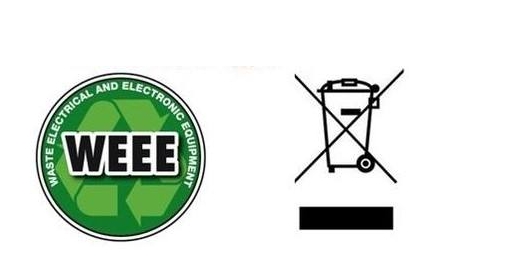WEEE:Waste Electrical and Electronic Equipment (WEEE) , the directive for the recycling of end-of-life electrical and electronic equipment. In order to properly dispose of these huge amounts of electrical and electronic waste and to recycle precious resources, the European Union launched a program in 2002WEEE (EU Recycling Directive) and RoHSDirective (European Union Environmental Directive).
RoHS:Restriction of use of certain Hazardous Substances in EEE 2003The European Union Directive on the Restriction of the Use of Certain Hazardous Substances in Electrical and Electronic Equipment, adopted by the European Parliament and the Council in 2008.

WEEEdirective and RoHSThe difference between directives:
EUWEEE< /span>Directive (EU 2002/96/ECDirective) and ROHSDirective (EU 2002/95/EC directive) since 2003year2Month13 becomes official law within the EU. According to the WEEE directive, since 2005year8Month13From 13 September 2019, the electronic and electrical equipment circulating in the EU market will be Manufacturers must be legally responsible for paying their own end-of-life product recycling costs.
According toROHS< /span>command, since 2006year7month1From today, all electrical and electronic equipment sold in the EU market must prohibit the use of heavy metals such as lead, mercury, cadmium, hexavalent chromium, and polybromine Diphenyl ethers (PBDE) and polybrominated biphenyls (PBB) and other smoldering agents. These two legislations will have a significant impact on my country's exports of electrical and electronic products to Europe. The relevant domestic industries should attach great importance to these two upcoming environmental protection legislations, and actively take countermeasures to ensure that my country's exports of electrical and electronic products to Europe do not cause substantial damage. damage.
Which countries need to do thisWEEECertified
Germany, UK, France, Italy, Spain, Sweden, Netherlands, Denmark , Portugal, Poland, Belgium, Finland, Luxembourg, Austria, Ireland, etc.
Which products are requiredWEEECertification
WEEEThe directive applies to the following electrical and electronic products: large household appliances, small household appliances, information Technical and telecommunication equipment, user equipment, lighting equipment, electrical and electronic tools (except large static industrial tools), toys, leisure and sports equipment, medical equipment (except all implanted and infected products), monitoring and control devices, vending machine. This Directive will apply without prejudice to EU law on safety and health requirements and EU special regulations on waste management. Equipment, weapons, munitions and war materiel related to the protection of the vital security interests of EU member states are not subject to this Directive. Electronic and electrical waste (WEEE) means waste in accordance with EU Article < span style="font-family:Calibri">75/442/EECThe first command of (a)Electronic or electrical equipment identified as waste as defined in paragraph (a), includes all components, parts and consumables that are part of the product discarded as part of it.
WEEEDirective AdministrationEARHow to supervise
EARIllegal behavior found/<span style="fon